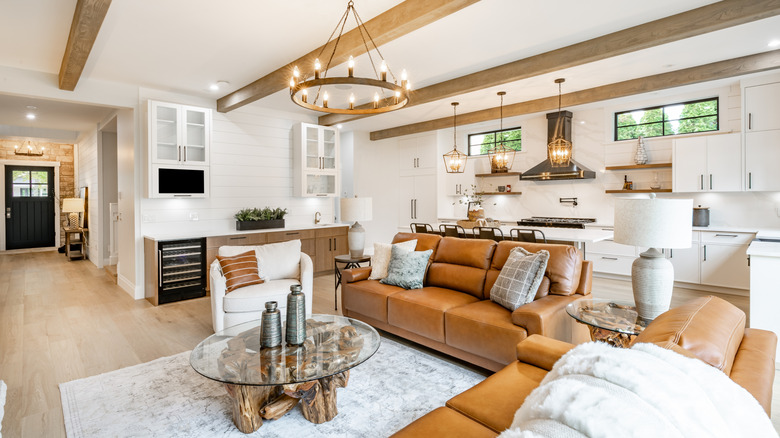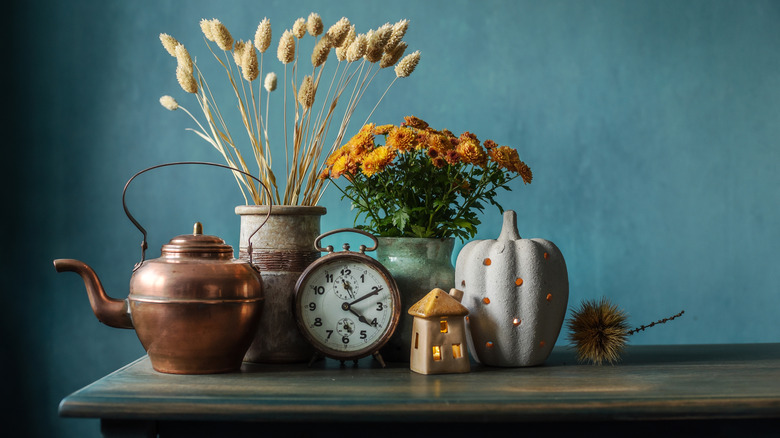The Decor Investment That Only Gets Better As Time Passes
Decor pieces are touches that tie up your aesthetic. Whether you use an antique mahogany cabinet or an abstract metal piece, choosing the right home decor is an important part of making your house feel like home. Some decor pieces can even become investments that add value over time, and items that develop a patina as they age fall perfectly into this category. Many materials develop a patina over time — wood, metal, leather, and even natural stones. But in all cases, this aging process adds a timeless beauty to each material.
A surface will develop a patina with continued use and/or due to prolonged exposure to the elements. When metals like copper get a patina, their color typically goes from reddish-brown to a darker brown with varying tones before the well-known green shade. Leather's patina is particularly beautiful, turning the material into a darker shade with deeper colors and a distinct sheen. Not all leather patinates though, so you have to get a full-grain or top-grain decor piece to enjoy this benefit. When stones such as marble patinate, their surface gets darkened and scratches begin to look more elegant than accidental. Wood patina differs depending on the type of wood. Generally, wood with light tones like Eastern white pine or cherry will get darker hues with time, while the ones that start dark like redwood and walnut will get lighter. Additionally, the unique grains and patterns on wooden decor pieces like tables will get more obvious as they age. Any decorations in these materials are sure to add character to your space.
Other benefits of decor pieces that develop patina
Aside from increased beauty and value over time, the patina serves as a natural protective layer for your decor. It can help reduce further oxidation that can cause corrosion and rust in metals, protect from UV damage in wood, and reduce wear and tear in leather products to make them more durable. Choosing decor pieces that develop a patina is also a sustainable decision for a few reasons. First of all, you get to use the items for a long time, making them a direct opposite of the wasteful fast furniture home decor trend people are avoiding. Allowing your decor to develop a patina naturally also means you don't have to use artificial patination methods that are usually harmful to your health and the environment.
Also, because these items add value with time, they become cost-effective. Authentic brass vases, oak dining tables, full-grain leather catch-alls, marble candle holders ... all these materials will likely put a dent in your pocket. But since you'll get to use them for long periods of time, you won't need to get new decor items often. Finally, if you ever decide to sell your decor pieces, going for ones that can patinate could earn you a lot more bang for your buck. A lot of antique buyers view patina as a quality indicator to know authentic items. However, you should always avoid using harsh or rough cleaners on them that can damage the patina. This is why you don't want to use baking soda on antiques.

